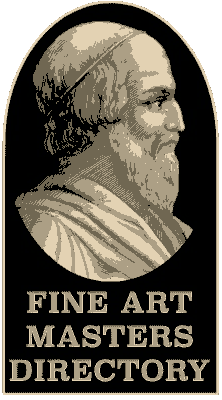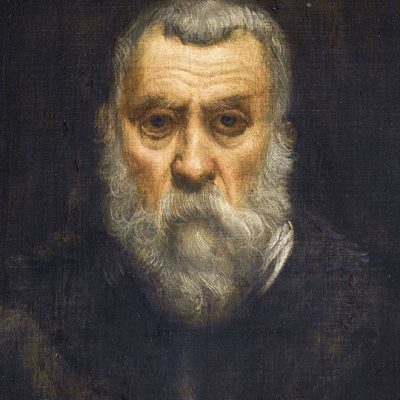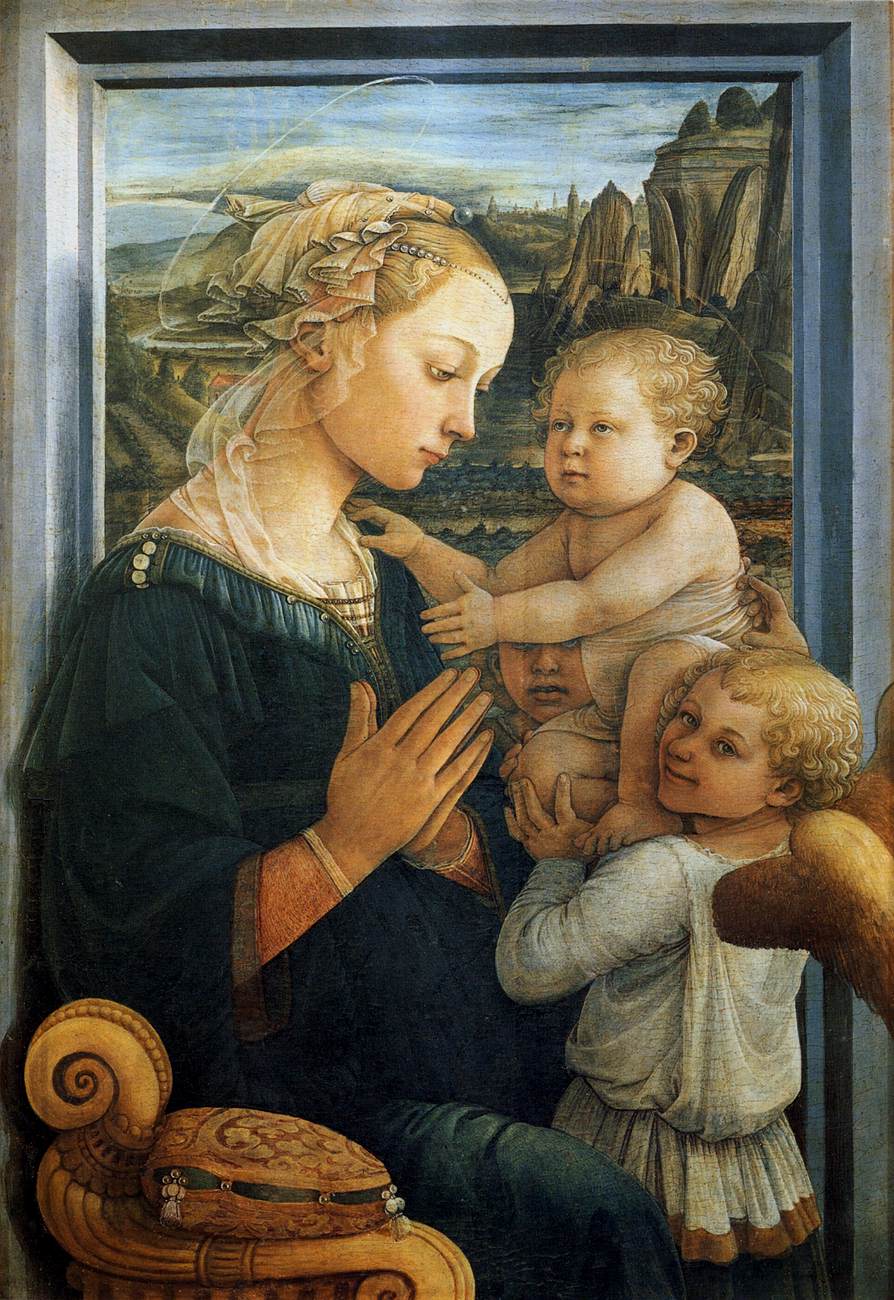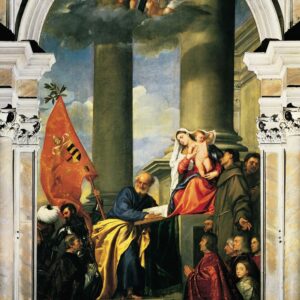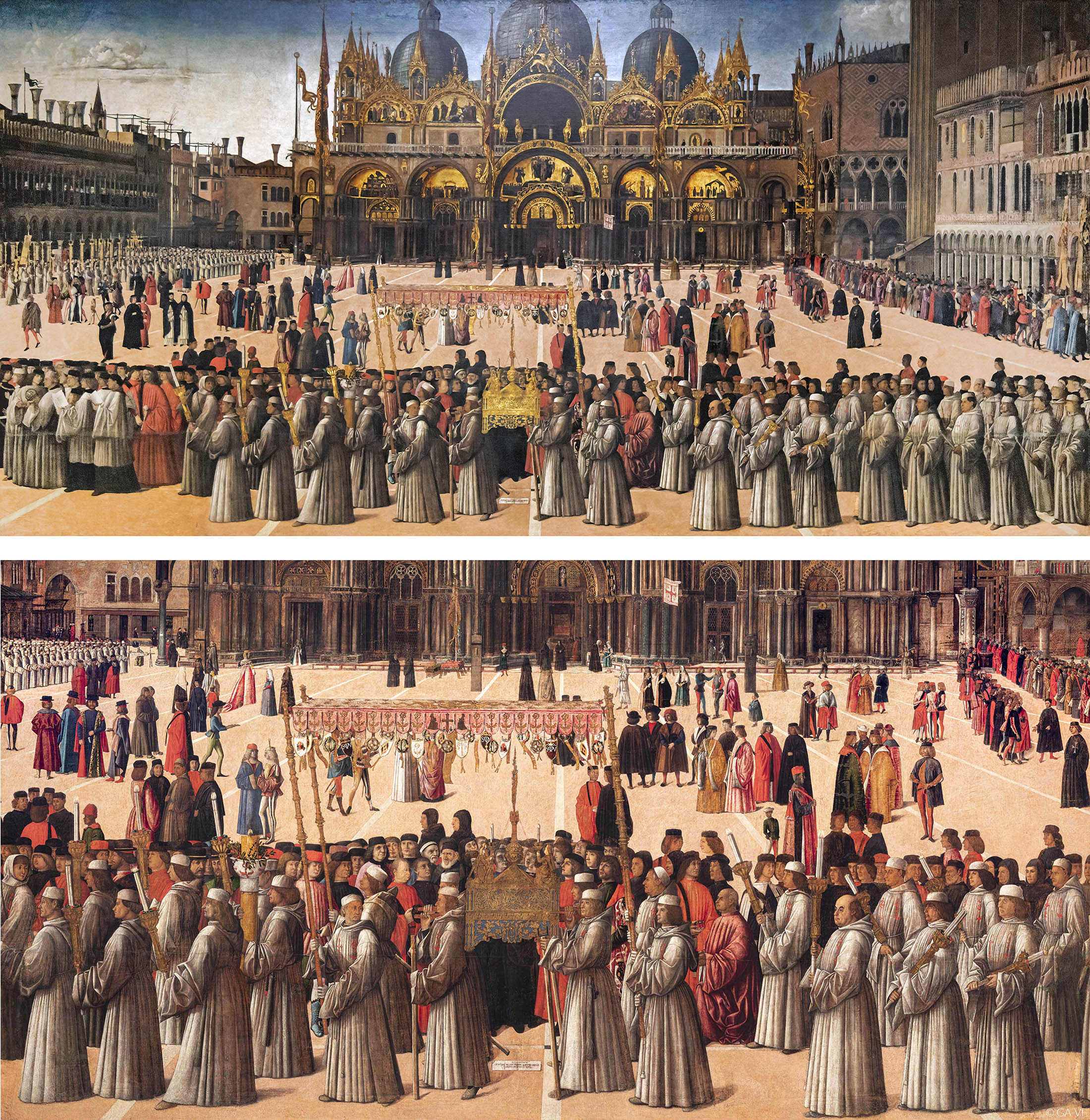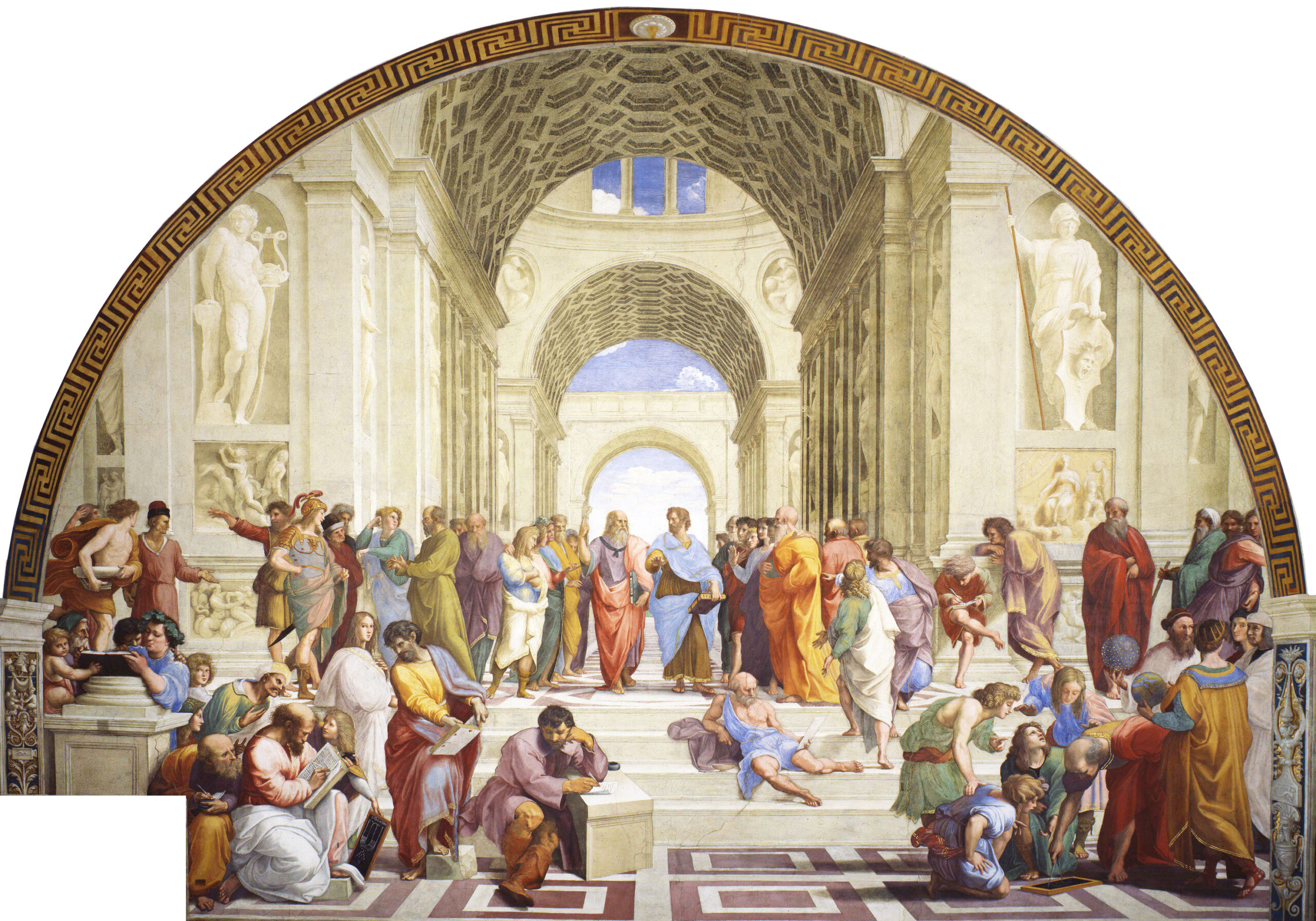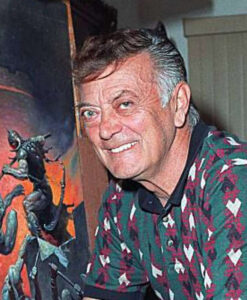Tintoretto ( born Jacopo Robusti;[1] late September or early October 1518[2] – 31 May 1594) was an Italian painter identified with the Venetian school. His contemporaries both admired and criticized the speed with which he painted, and the unprecedented boldness of his brushwork. For his phenomenal energy in painting he was termed Il Furioso (“The Furious”). His work is characterised by his muscular figures, dramatic gestures and bold use of perspective, in the Mannerist style.[3]
Tintoretto was born in Venice in 1518. His father, Battista, was a dyer, or tintore; hence the son got the nickname of Tintoretto, “little dyer”, or “dyer’s boy”.[4] Tintoretto is known to have had at least one sibling, a brother named Domenico, although an unreliable 17th-century account says his siblings numbered 22.[5] The family was believed to have originated from Brescia, in Lombardy, then part of the Republic of Venice. Older studies gave the Tuscan town of Lucca as the origin of the family.
Little is known of Tintoretto’s childhood or training. According to his early biographers Carlo Ridolfi (1642) and Marco Boschini (1660), his only formal apprenticeship was in the studio of Titian, who angrily dismissed him after only a few days—either out of jealousy of so promising a student (in Ridolfi’s account) or because of a personality clash (in Boschini’s version).[6] From this time forward the relationship between the two artists remained rancorous, despite Tintoretto’s continued admiration for Titian. For his part, Titian actively disparaged Tintoretto, as did his adherents.[7]
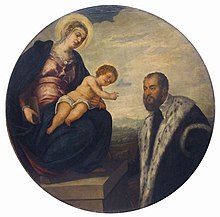
Madonna with Child and Donor, National Museum of Serbia, Belgrade
Tintoretto sought no further teaching, but studied on his own account with laborious zeal. According to Ridolfi, he gained some experience by working alongside artisans who decorated furniture with paintings of mythological scenes, and studied anatomy by drawing live models and dissecting cadavers.[8] He lived poorly, collecting casts, bas-reliefs, and prints, and practicing with their aid. At some time, possibly in the 1540s, Tintoretto acquired models of Michelangelo‘s Dawn, Day, Dusk and Night, which he studied in numerous drawings made from all angles.[9] Now and afterwards he very frequently worked by night as well as by day. His noble conception of art and his high personal ambition were both evidenced in the inscription which he placed over his studio Il disegno di Michelangelo ed il colorito di Tiziano (“Michelangelo’s drawing and Titian’s color”).[10]

The Siege of Asola (1544–45), National Museum, Poznań
The young painter Andrea Schiavone, four years Tintoretto’s junior, was much in his company. Tintoretto helped Schiavone at no charge with wall-paintings; and in many subsequent instances he also worked for nothing, and thus succeeded in obtaining commissions.[11] The two earliest mural paintings of Tintoretto—done, like others, for next to no pay—are said to have been Belshazzar’s Feast and a Cavalry Fight. These have both long since perished, as have all his frescoes, early or later. The first work of his to attract some considerable notice was a portrait-group of himself and his brother—the latter playing a guitar—with a nocturnal effect; this has also been lost. It was followed by some historical subject, which Titian was candid enough to praise.[12]
One of Tintoretto’s early pictures still extant is in the church of the Carmine in Venice, the Presentation of Jesus in the Temple (c. 1542); also in S. Benedetto are the Annunciation and Christ with the Woman of Samaria. For the Scuola della Trinità (the scuole or schools of Venice were confraternities, more in the nature of charitable foundations than of educational institutions) he painted four subjects from Genesis. Two of these, now in the Gallerie dell’Accademia in Venice, are Adam and Eve and the Death of Abel, both noble works of high mastery, which indicate that Tintoretto was by this time a consummate painter—one of the few who have attained to the highest eminence in the absence of any recorded formal training.[12] Until 2012, The Embarkation of St Helena in the Holy Land was attributed to Schiavone. But new analysis of the work has revealed it as one of a series of three paintings by Tintoretto, depicting the legend of St Helena And The Holy Cross. The error was uncovered during work on a project to catalogue continental European oil paintings in the United Kingdom.[13] The Embarkation of St Helena was acquired by the Victoria and Albert Museum in 1865. Its sister paintings, The Discovery Of The True Cross and St Helen Testing The True Cross, are held in galleries in the United States.[13]
